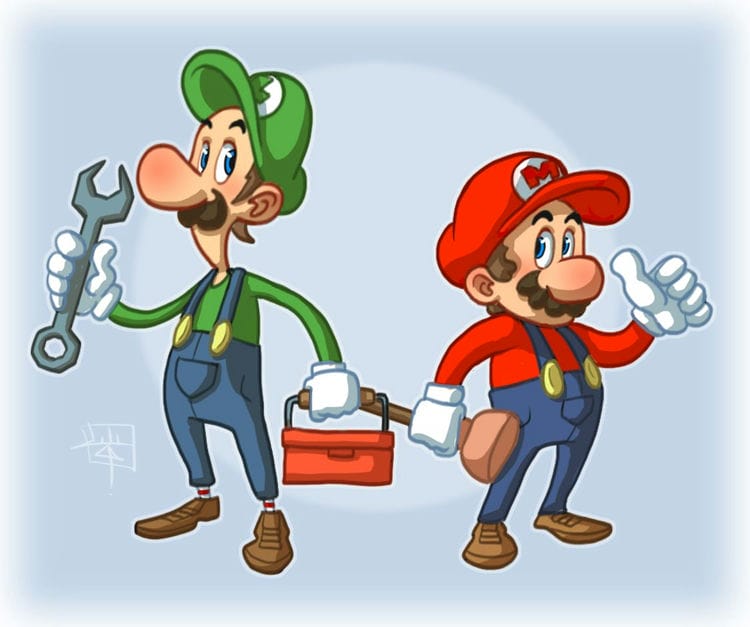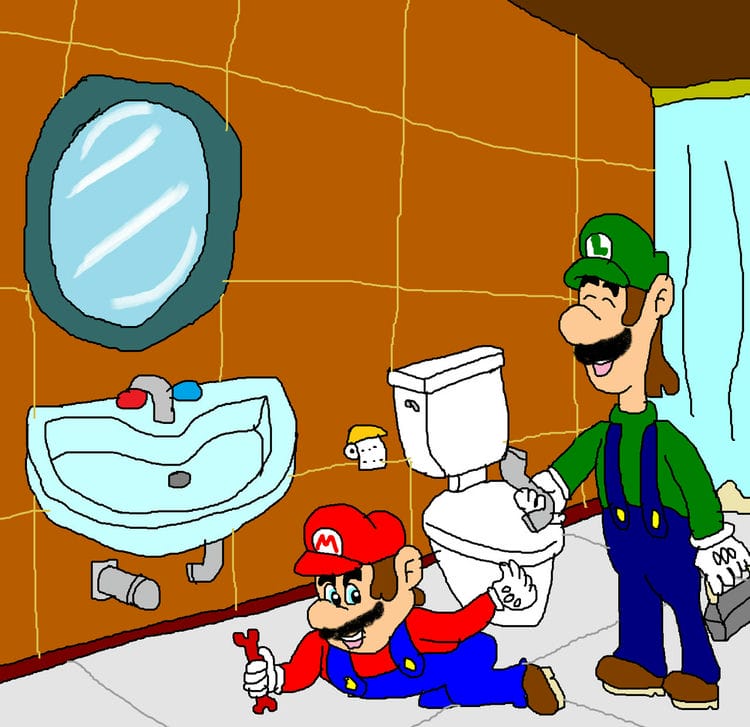MOVIE & LIFESTYLE NEWS
Are Mario and Luigi Plumbers? Exploring the Origins of the Super Mario Bros.
When you hear the names Mario and Luigi, you might instantly think of vibrant mushrooms, perilous jumps, and adventures in the Mushroom Kingdom. But there’s one thing that often comes up in conversations about these iconic Nintendo characters: Are Mario and Luigi plumbers? This question might seem straightforward, yet it delves into a deeper exploration of the characters’ origins and how they’ve evolved over time.
Are Mario and Luigi Plumbers? The Origins of Mario and Luigi
Mario, Nintendo’s most recognizable mascot, made his debut in 1981’s arcade game “Donkey Kong.” At that time, he wasn’t the iconic plumber we know today. Instead, he was known as “Jumpman,” reflecting his role in the game, where he leaped over barrels and climbed ladders to rescue a damsel in distress from the clutches of the menacing gorilla, Donkey Kong.

His attire and environment in “Donkey Kong” were in line with a construction site, suggesting he was a carpenter, not a plumber. The game’s setting—a multi-tiered construction scaffold—reinforced this image, with tools and girders in the background.
However, the true transformation came in 1983 with the release of “Mario Bros.” This arcade game introduced his brother Luigi and shifted the setting to the sewers of New York City. Here, the brothers worked together to eliminate pests and navigate underground pipes.
This change in setting was significant, with the game emphasizing teamwork and problem-solving through plumbing-themed levels. Mario and Luigi wore overalls, a typical outfit for plumbers, and donned iconic red and green hats, respectively. These elements combined to firmly establish their identities as plumbers, a theme that would become a central part of their story.
Evolution of the Super Mario Bros.
The evolution of Mario and Luigi continued with the groundbreaking 1985 release of “Super Mario Bros.” for the Nintendo Entertainment System (NES). This game took the plumbers out of the sewers and into the fantastical Mushroom Kingdom.

Here, the game’s setting was a stark contrast to the previous title, featuring vibrant landscapes, mythical creatures, and a more expansive world. Despite this dramatic shift, Nintendo kept the plumbing theme subtly woven into the fabric of the game.
In “Super Mario Bros.,” pipes played a crucial role, not only as obstacles but also as transportation devices, allowing the brothers to travel between different parts of the Mushroom Kingdom. The game’s layout emphasized exploration and discovery, with hidden pathways and secret rooms accessible through these pipes.
While Mario and Luigi were no longer explicitly working as plumbers, the plumbing-related imagery became a key gameplay mechanic. The brothers’ journey to rescue Princess Peach from the evil Bowser emphasized their new roles as heroes, yet their roots as plumbers remained integral to their identity.
This evolution from a straightforward plumbing concept to a more expansive adventure narrative demonstrated Nintendo’s ability to adapt and innovate while keeping core elements of the characters’ identities intact. The success of “Super Mario Bros.” paved the way for countless sequels and spin-offs, each expanding the Mario universe while paying homage to the iconic plumber duo’s humble beginnings.
The Plumbing Legacy in Modern Games
In recent years, the plumbing roots of Mario and Luigi have gradually faded into the background as their roles in video games have become more centered on adventurous escapades and heroic quests. The plumber theme, while still a part of their identity, is less prominent in newer titles where the focus has shifted to larger narratives and expansive gamepl

ay. Take “Super Mario Odyssey,” for example, a game that transports Mario across a series of diverse and imaginative worlds. Here, Mario dons various costumes to fit into the environments he explores, with plumbing taking a backseat to his more adventurous activities.
The game focuses on collecting “Power Moons,” traversing different landscapes, and interacting with a wide array of characters, indicating a broader scope beyond just pipes and plumbing. Similarly, in the “Luigi’s Mansion” series, Luigi has transitioned from a plumber to a ghost hunter.
Armed with a vacuum cleaner designed to capture spectres, Luigi explores haunted mansions, solving puzzles and defeating supernatural foes. While plumbing elements may not be front and center in these modern games, the imagery of pipes, plungers, and overalls persists in subtle ways, reminding players of the characters’ origins.
Whether it’s using pipes as transportation in “Super Mario Odyssey” or Luigi’s plumber-like jumpsuit in “Luigi’s Mansion,” these connections to their plumbing past serve as a nod to the long-standing legacy of the Super Mario Bros. franchise.
He plumber aspect of Mario and Luigi has taken a backseat to their roles as adventurers and heroes in the Mushroom Kingdom and beyond. Games like “Super Mario Odyssey” and “Luigi’s Mansion” have emphasized exploration and action over plumbing tasks. However, the imagery of pipes and other plumbing-related elements remains a consistent theme throughout the franchise, serving as a nod to the characters’ origins.
Pop Culture and Plumbing
The enduring image of Mario and Luigi as plumbers has become a significant part of their charm, resonating with fans and influencing pop culture for decades. The simple concept of two working-class brothers rising to hero status has struck a chord with audiences, creating a sense of relatability and nostalgia. This connection has extended far beyond the realm of video games, finding its way into fan art, cosplay, and various forms of merchandise.

It’s not uncommon to see people at conventions dressed in the classic red and green overalls, wearing the iconic caps with the “M” and “L” logos, or even carrying oversized plungers as accessories. This embrace of their plumber roots in pop culture demonstrates how deeply ingrained the concept has become in the public’s imagination.
Moreover, Mario and Luigi’s plumber identity has been referenced in television shows, movies, and even commercials, illustrating their widespread recognition. The classic imagery of pipes and plumbing tools is often used in humorous ways to evoke a sense of fun and nostalgia, underscoring the brothers’ evolution from humble beginnings to pop culture icons.
Despite the expansion of their roles in modern games, the idea of Mario and Luigi as plumbers remains a touchstone for fans, providing a direct connection to Nintendo’s early successes and the beginning of a cultural phenomenon. This enduring appeal, rooted in the simple yet relatable premise of the original “Mario Bros.,” continues to inspire and engage audiences across generations.
In summary, Mario and Luigi are indeed plumbers, with a history rooted in the early days of Nintendo’s success. Though their roles have grown to encompass a variety of adventures and settings, their plumbing origins remain a key part of their identity, connecting them to the iconic imagery that has made them beloved worldwide.
If you’re a fan of the Super Mario Bros. and want to wear your love for them on your sleeve—literally—why not check out the stylish Mario Hawaiian Shirt at AlibayTrendy Store? This unique and vibrant shirt captures the essence of Mario’s adventurous spirit, with a fun tropical twist. Show off your love for Nintendo’s iconic plumbers in style—visit AlibayTrendy Store today to get yours!
